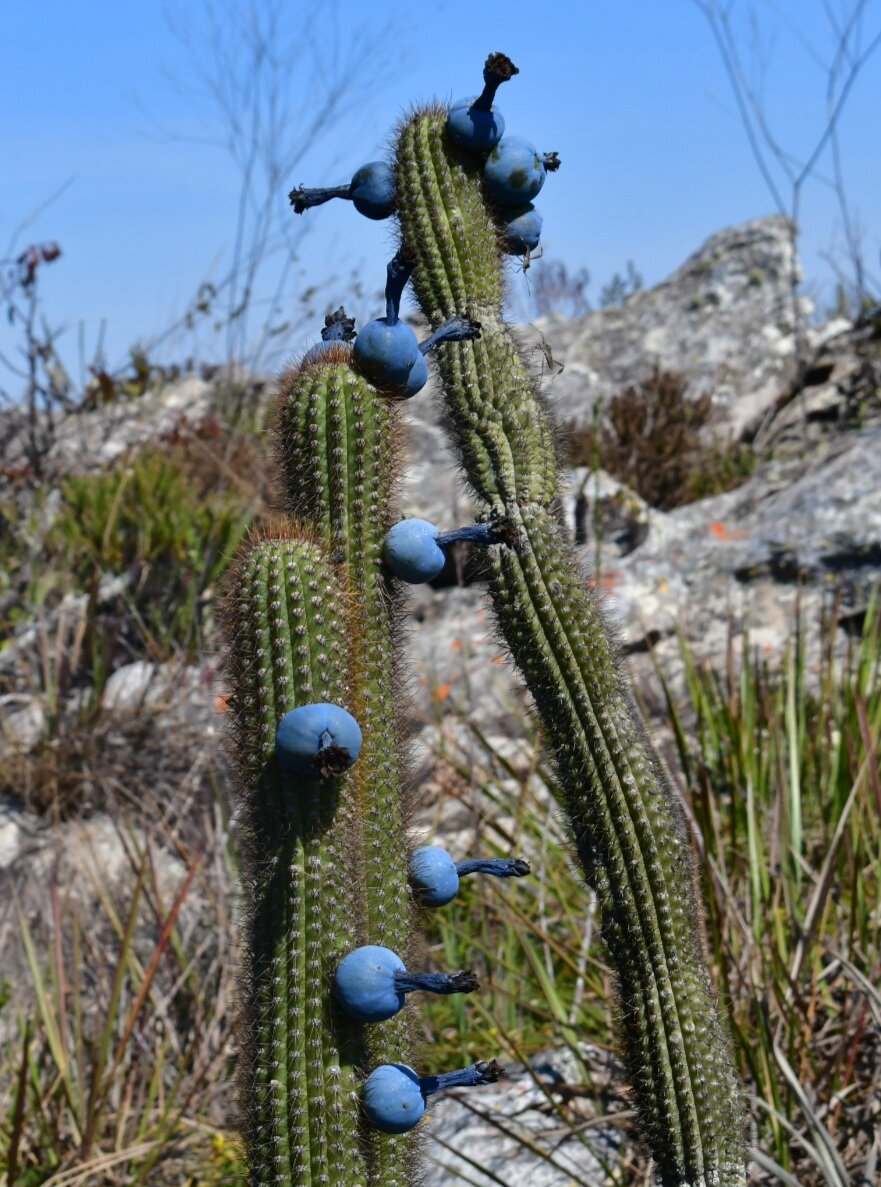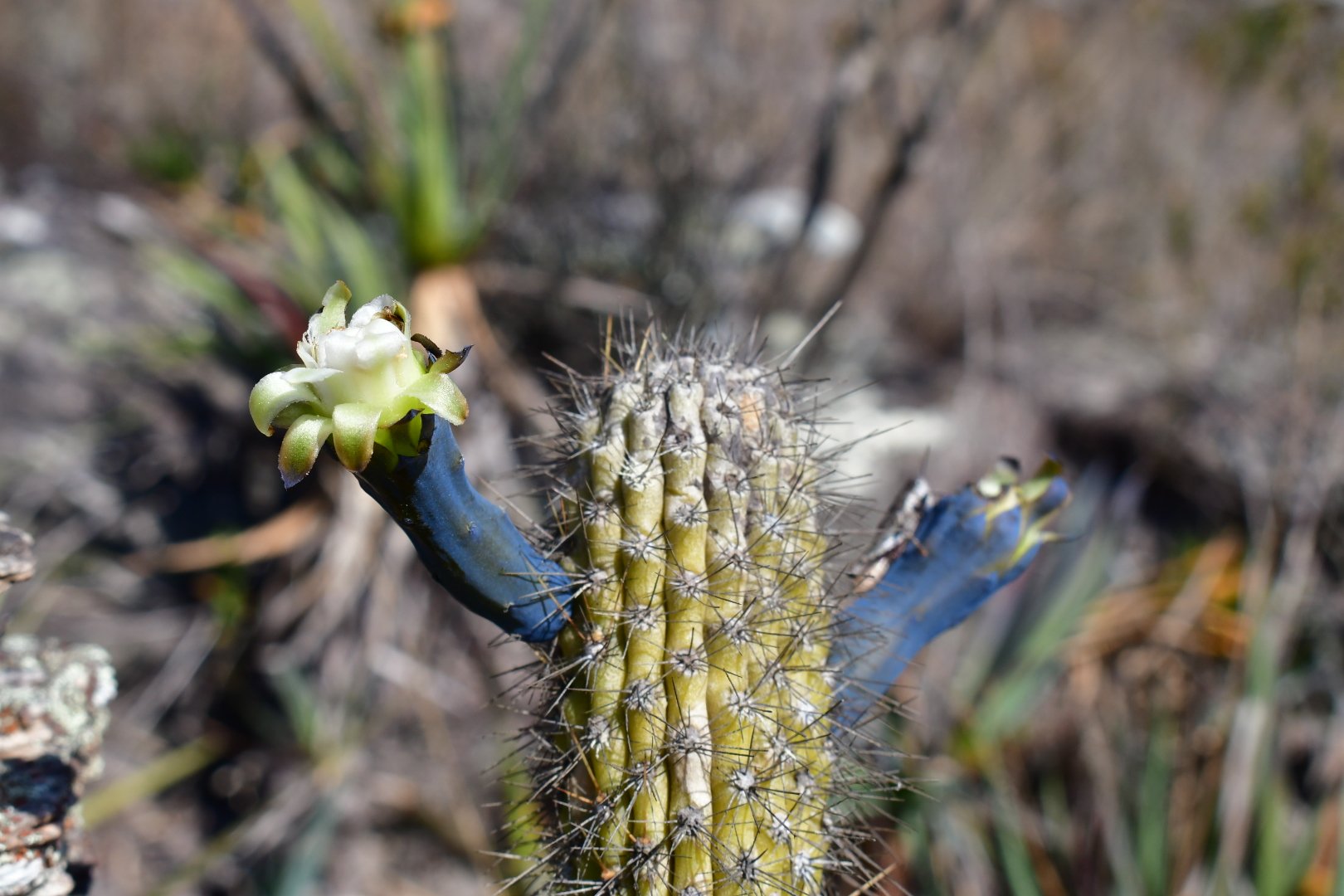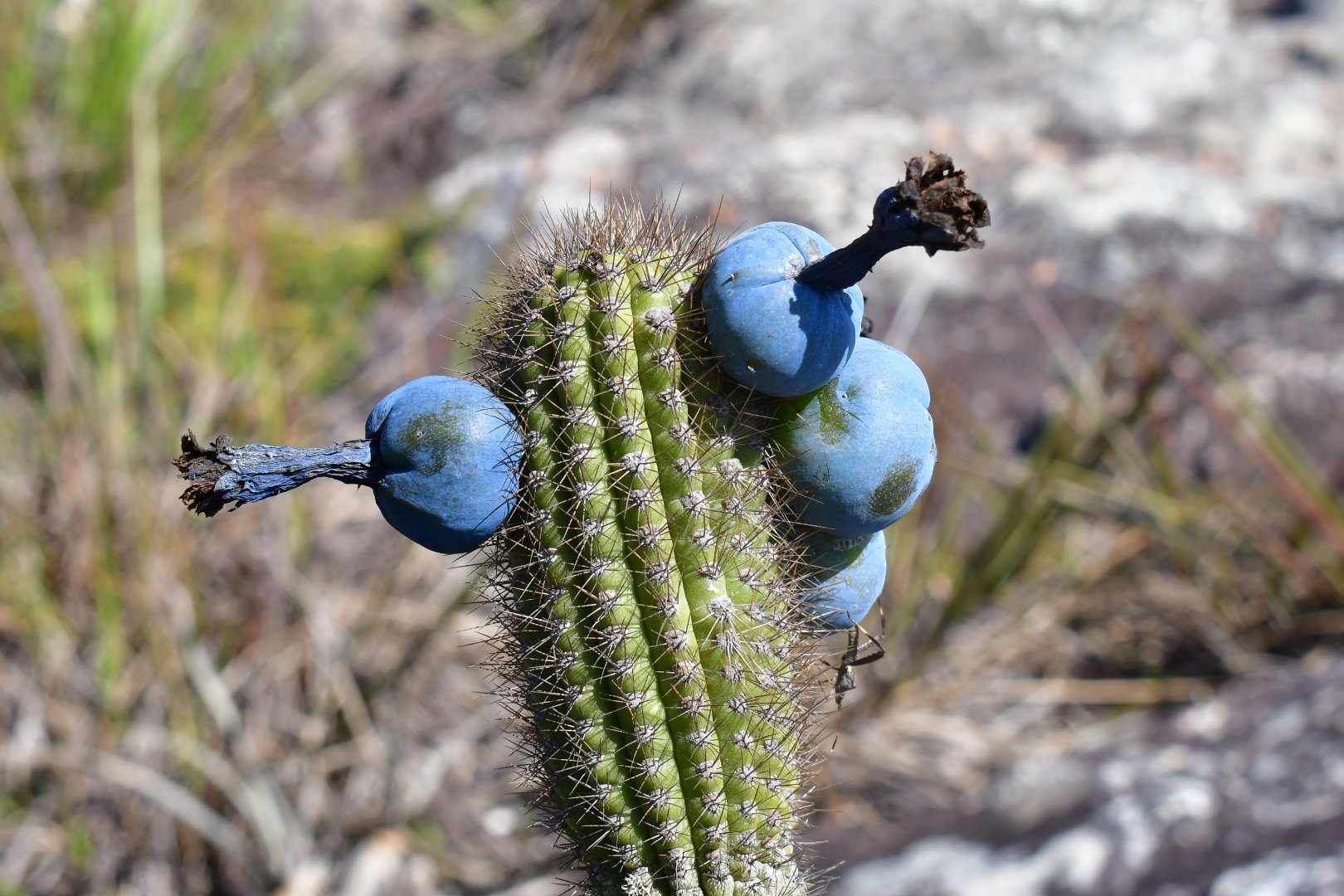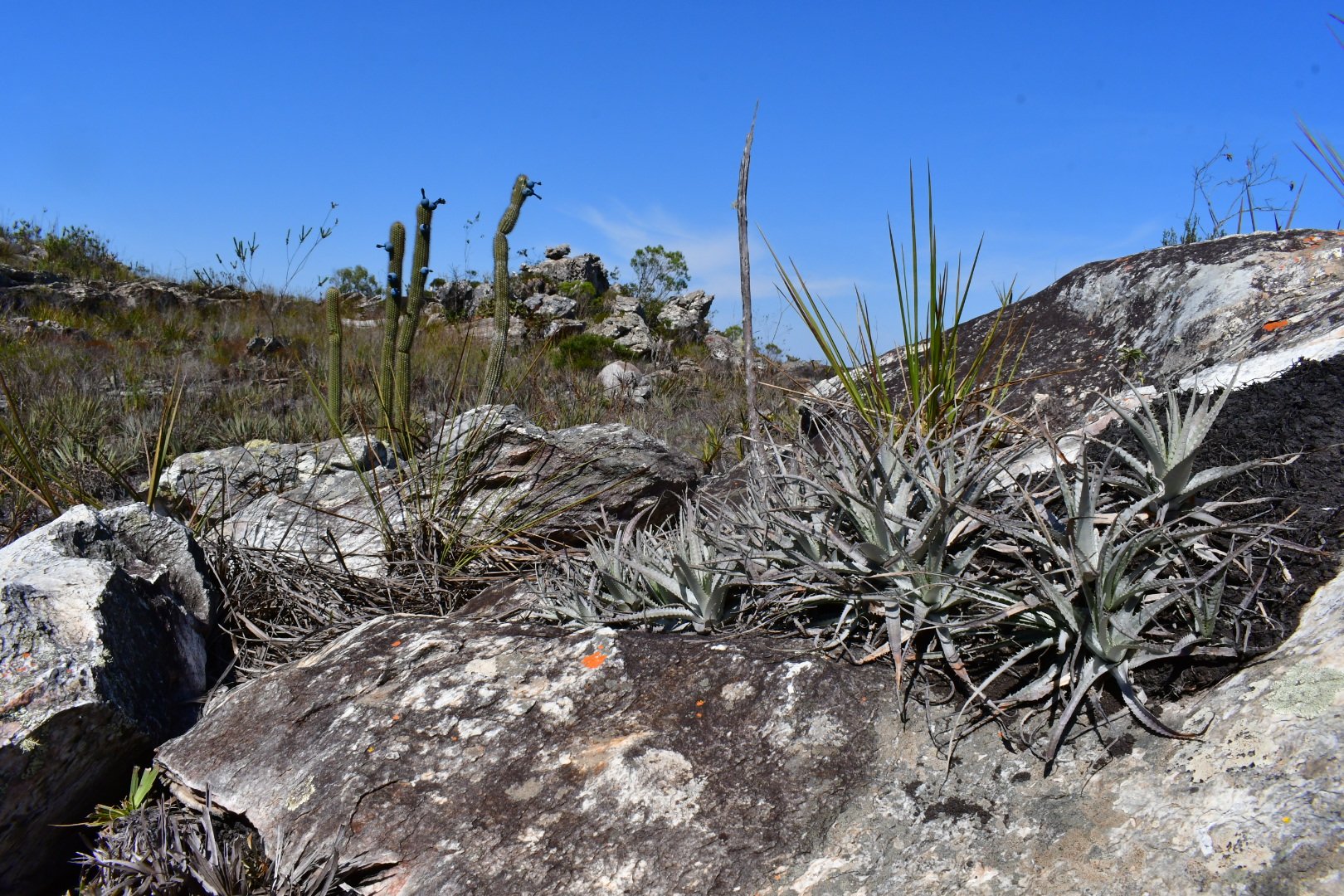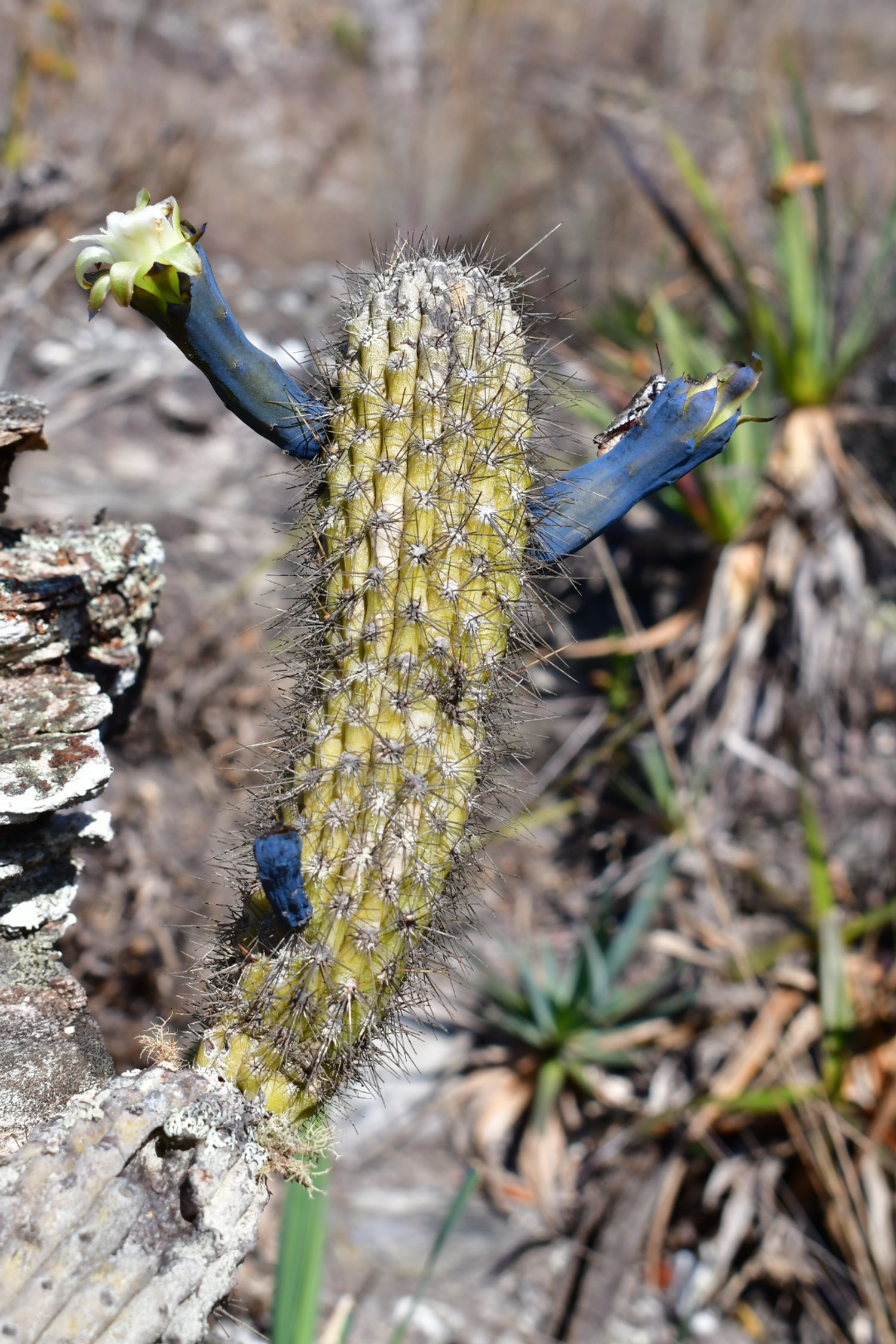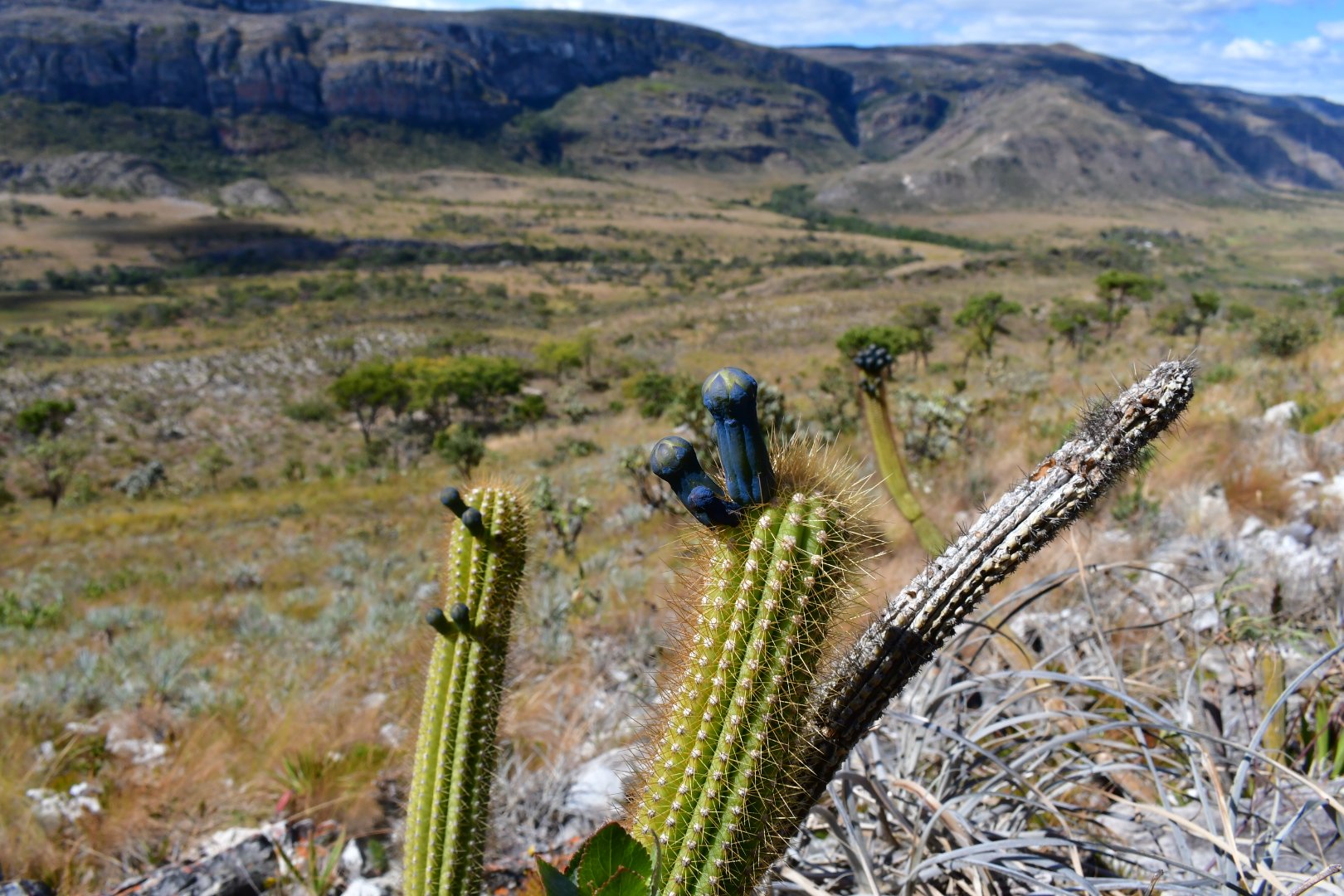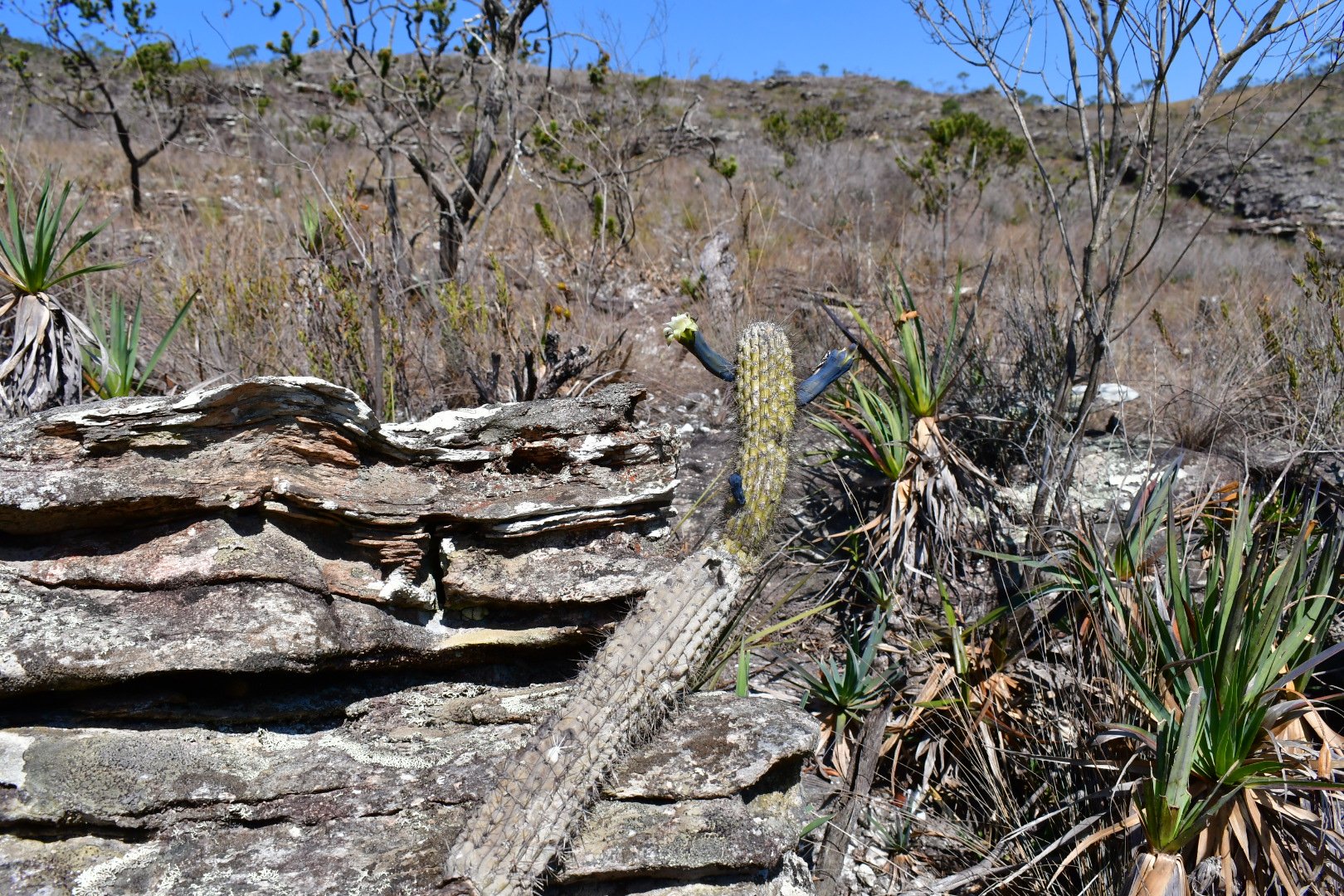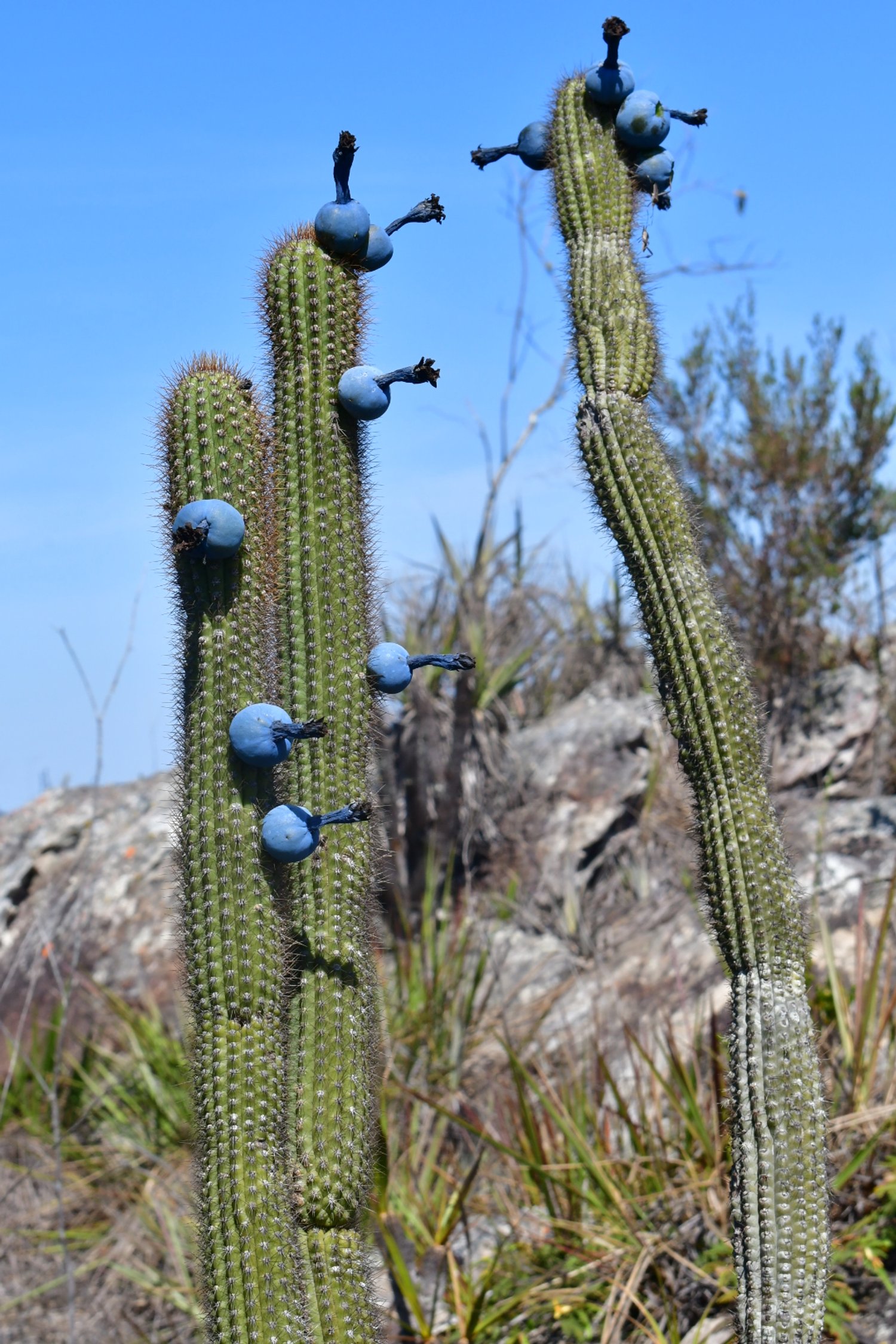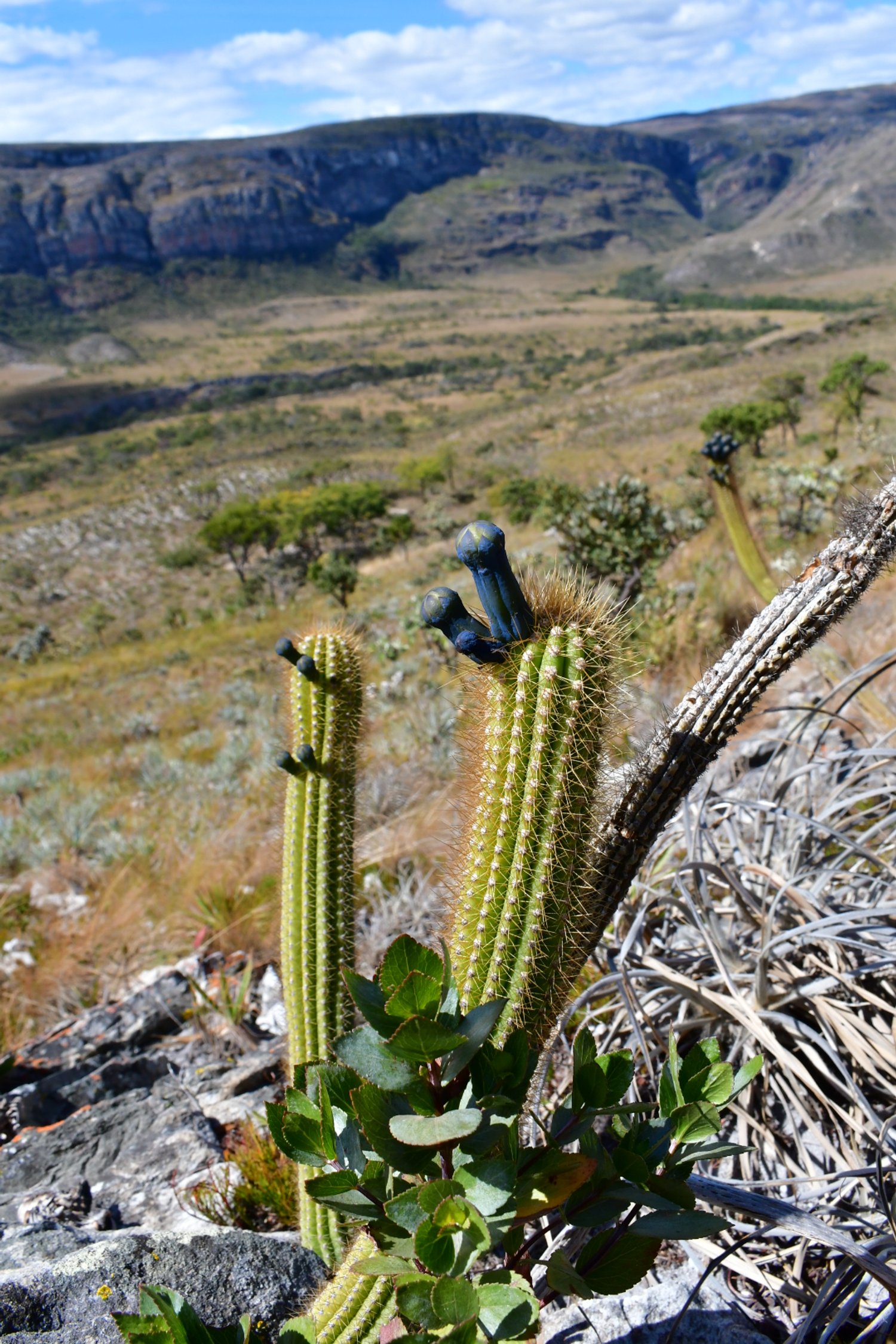Blue Cacti & Bat Pollinated Flowers
Emblematic Cactus of the Brazilian Cerrado, Cipocereus minensis is an endemic cactus that is ubiquitous in the Campos Rupestres biome of Minas Gerais Brazil. Campos Rupestres are thin-soiled rock fields full of tons of cool drought-adapted orchids, bromeliads, cacti & other plants that grow on the nutrient-poor quartzitic sandstone here. Many of these plants are known as lithophytes - plants that grow on rocks. Though the rainy season here can drop upwards of 20-30 inches of rain, the dry season caused by the ITCZ has caused all kinds of drought strategies to evolve.
Like many bat-pollinated flowers, Cipocereus flowers begin to open at night. Though the sepals and hypanthium are a beautiful blue, the flower itself is cream-colored (easier to see in the dark night) and produce prodigious amounts of nectar for its obligate bat-pollinators.
By morning, the flowers begin to close up. As the tepals and flower tube are blue and cacti have inferior ovaries, the fruits themselves are also blue when they mature and are edible (all cactus fruit is technically edible, though not necessarily palletable), reportedly having a taste and texture somewhat similar to kiwi.
We encountered Cipocereus frequently, always growing sympatrically with other wild-ass plants like drought-adapted Begonias, Syagrus palms, Vellozias, Encholiriums, spiny bromeliads, and other plants that are little known and would blow the minds of horticulturalists the world over.
Sadly, as all individuals of this species are obligate outcrossers and bats are basically the sole pollinators (rarely bees, as the flowers tend to close up by the time of day bees are active), if the habitat loses the bats, it will lose this cactus. This will of course cause ripples down the food chain, as the fruits of this cactus feed a ton of the local critters.
The blue color of the sepals/hypanthium is likely a way to protect the flowers from UV/Sun, since they are in bud during the day before they open at night.
Cippocereus minensis

